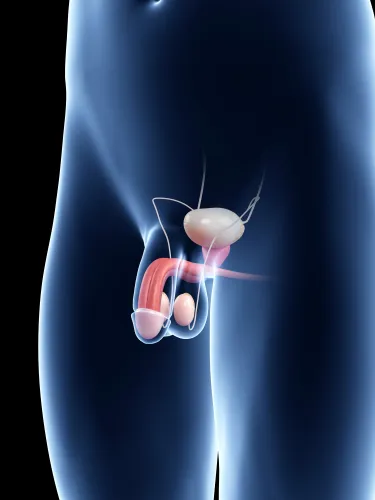EM Coding Alert
Strengthen Your Tendon Repair and Tenolysis Coding Skills
Strengthen Your Tendon Repair and Tenolysis Coding Skills These surgeries are usually preceded by E/M and imaging services. A patient who presents with certain types of foot pain may require a foot tendon repair or tenolysis. The procedures differ in both methodology and severity, as well as code sets. Coders need to be able to distinguish one procedure from the other to code claims correctly. Find out more about each procedure. Look to Office/Outpatient Codes First Often, the orthopedist’s initial encounter with a tendon repair/tenolysis patient would start with an office/outpatient evaluation and management (E/M) service. “Initial determination will be based upon physical exam and patient complaints, tenderness along the course of the tendon or the attachment of the tendon,” explains Ruby O’Brochta-Woodward BSN, CPC, CDEO, CPMA, CPCO, CPB, COSC, CSFAC, CPC-I. The patient might complain that the tendon is catching or slipping, or there is pain with certain motions that are tendon-dependent, O’Brochta-Woodward explains. If this E/M is office/outpatient, report it with a code from the 99202 (Office or other outpatient visit for the evaluation and management of a new patient, which requires a medically appropriate history and/or examination and straightforward medical decision making. When using time for code selection, 15-29 minutes of total time is spent on the date of the encounter.) through 99215 (Office or other outpatient visit for the evaluation and management of an established patient, which requires a medically appropriate history and/or examination and high level of medical decision making. When using time for code selection, 40-54 minutes of total time is spent on the date of the encounter.) code set. If the provider needs further study on the patient’s injury, the E/M “would be followed by X-rays to rule out any fractures. Also, an MRI [magnetic resonance imaging] is usually ordered to better view the soft tissues, tendons, and ligaments,” according to Wayne Conway, CPC, CGSC, COSC, provider coder II at WakeMed Providers Practice in Raleigh, North Carolina. For the X-rays you’d likely report a code such as 73620 (Radiologic examination, foot; 2 views) or 73630 (… complete, minimum of 3 views). For the MRI, you’d likely use one of the following codes: Note: This is not a complete list of the tests/services your provider might employ to identify foot tendon repair/tenolysis candidates. Always code to the notes. Check your payer contract if you have questions regarding testing and services surrounding these surgeries. Understand How Tendon Repair Differs From Tenolysis Once the provider decides operating is necessary, they’ll perform either a foot tendon repair or a tenolysis. Be prepared to differentiate between the two, because it will affect code choice. “Many times, a tendon repair is performed for a traumatic rupture, avulsion, or laceration of a tendon,” Conway says. The tear could occur during an automobile accident, a fall from a high place, or even a lawnmower accident. Also, “patients could have an old tendon tear injury/chronic condition that needs to be repaired as well. Tendon repairs are not always for an acute injury,” Conway clarifies. “With a tendon repair the tendon is either completely or partially torn. How they repair it will be dependent on where it is torn and how good the rest of the tendon is,” explains O’Brochta-Woodward. For a foot tendon repair, choose from the following codes, depending on encounter specifics: Tenolysis surgery is far less involved, expert coders report. “A tendon tenolysis might be performed for an old injury that has now healed but has scar tissue or tenosynovitis built up around the tendon causing pain and stiffness,” Conway explains. “Sometimes an old injury could have a tendon tear, but the tear is not large enough that it warrants a repair. A tenolysis would be appropriate in these instances,” he adds. For tenolysis, choose from the following codes, depending on encounter specifics: Remember: “One thing to keep in mind is that both range of repair and tenolysis codes are separated according to extensor and flexor tendons, so keep that in mind when choosing the appropriate codes,” says Conway. Beware of These Diagnoses Tied to Tendon Repair/Tenolysis Claims There are certain diagnoses that you could see during a foot tendon repair/tenolysis encounter form. Though this is not a definitive list, here are a few diagnosis codes for conditions that lead to tendon repair or tenolysis: Tendon Repair Dx Examples Tenolysis DX examples

Related Articles
EM Coding Alert
- Procedure Deep Dive:
Strengthen Your Tendon Repair and Tenolysis Coding Skills
Strengthen Your Tendon Repair and Tenolysis Coding Skills These surgeries are usually preceded by E/M [...] - Specialty Spotlight:
Follow These Three Tips for Coding Vent Management
Learn the rules for vent management and E/M coding. There are several common coding mistakes [...] - Documentation:
Bolster Patient Records With Accurate Documentation
Hint: Medical record notes should include both reason for encounter and plan of care. Comprehensive [...] - You Be the Coder:
Consider Use of Consult Code Carefully
Question: A 53-year-old new patient with type 1 diabetes presented to the clinic with a [...] - Reader Questions:
Don’t Rely on Single Code for Nurse-Led Encounters
Question: Should I be reporting all services performed by a nurse, including those provided to [...] - Reader Questions:
Educate Providers to Avoid Overcoding
Question: We have a provider in our practice who insists on adding an office/outpatient evaluation [...] - Reader Questions:
Don’t Double Dip on E/M Time Count
Question: Now that we can code many E/M services based on time, and we can [...]




